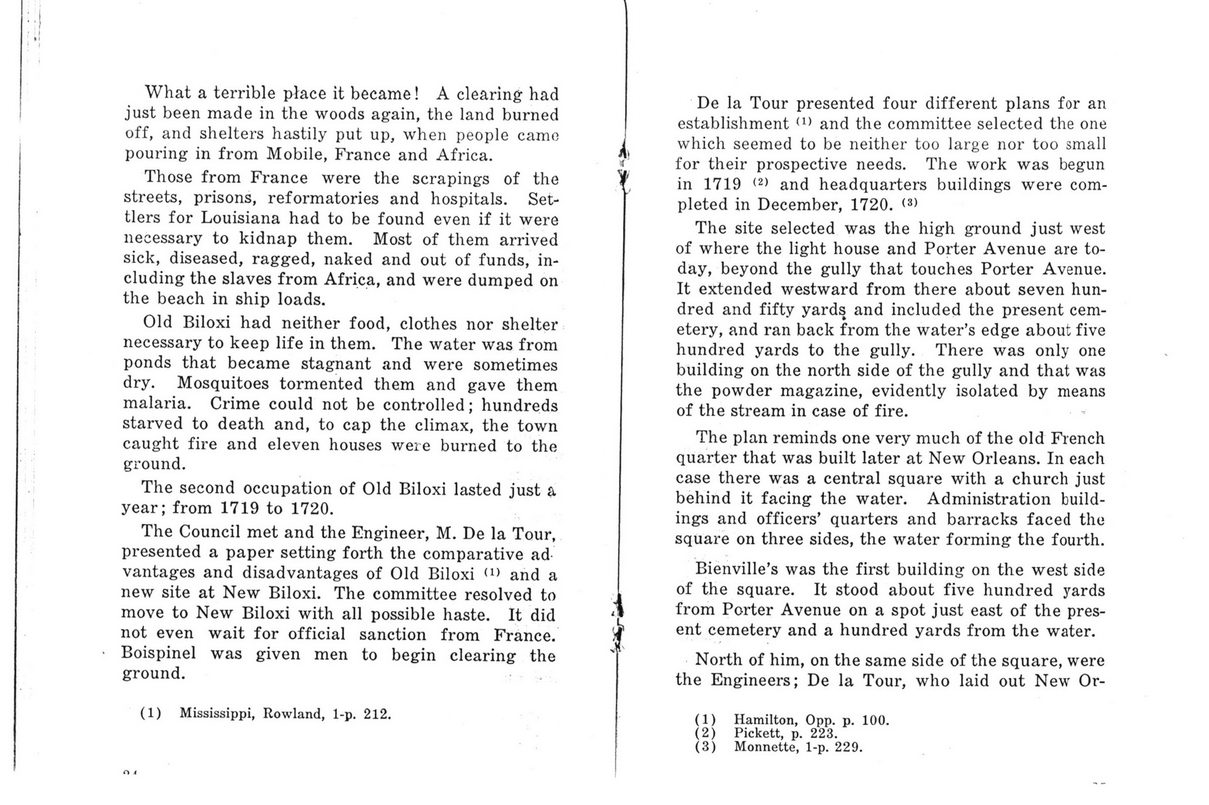This text was obtained via automated optical character recognition.
It has not been edited and may therefore contain several errors.
What a terrible place it became! A clearing had just been made in the woods again, the land burned off, and shelters hastily put up, when people came pouring in from Mobile, France and Africa. Those from France were the scrapings of the streets, prisons, reformatories and hospitals. Settlers for Louisiana had to be found even if it were necessary to kidnap them. Most of them arrived sick, diseased, ragged, naked and out of funds, including the slaves from Africa, and were dumped on the beach in ship loads. Old Biloxi had neither food, clothes nor shelter necessary to keep life in them. The water was from ponds that became stagnant and were sometimes dry. Mosquitoes tormented them and gave them malaria. Crime could not be controlled; hundreds starved to death and, to cap the climax, the town caught fire and eleven houses were burned to the ground. The second occupation of Old Biloxi lasted just a year; from 1719 to 1720. The Council met and the Engineer, M. De la Tour, presented a paper setting forth the comparative ad vantages and disadvantages of Old Biloxi (1) and a new site at New Biloxi. The committee resolved to move to New Biloxi with all possible haste. It did not even wait for official sanction from France. Boispinel was given men to begin clearing the ground. (1) Mississippi, Rowland, 1-p. 212. De la Tour presented four different plans for an establishment (1) and the committee selected the one which seemed to be neither too large nor too small for their prospective needs. The work was begun in 1719 (2) and headquarters buildings were completed in December, 1720. (3> The site selected was the high ground just west of where the light house and Porter Avenue are today, beyond the gully that touches Porter Avenue. It extended westward from there about seven hundred and fifty yards> and included the present cemetery, and ran back from the water’s edge about five hundred yards to the gully. There was only one building on the north side of the gully and that was the powder magazine, evidently isolated by means of the stream in case of fire. The plan reminds one very much of the old French quarter that was built later at New Orleans. In each case there was a central square with a church just behind it facing the water. Administration buildings and officers’ quarters and barracks faced the square on three sides, the water forming the fourth. Bienville’s was the first building on the west side of the square. It stood about five hundred yards from Porter Avenue on a spot just east of the present cemetery and a hundred yards from the water. North of him, on the same side of the square, were the Engineers; De la Tour, who laid out New Or- (1) Hamilton, Opp. p. 100. (2) Pickett, p. 223. (3) Monnette, 1-p. 229.

Biloxi Historical-Sketch---Bremer-(14)